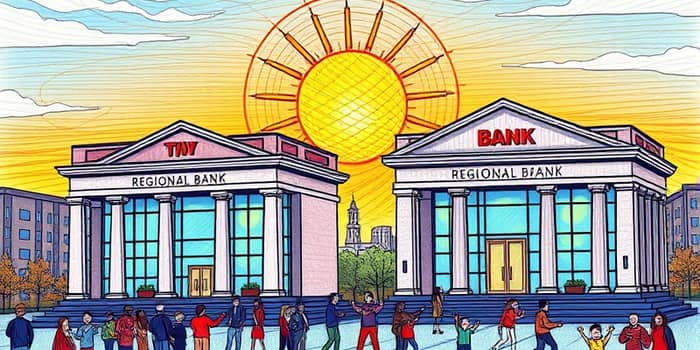
In early 2025, the landscape of U.S. regional banking underwent a remarkable transformation. With 19 announced mergers totaling $985.5 million, local institutions have embraced consolidation as a path to growth and resilience. Far from a mere financial maneuver, these strategic unions carry the promise of cutting-edge technology investments, deeper community engagement, and enhanced competitive positioning.
While consolidation can trigger concerns around branch closures or service changes, a broader perspective reveals a powerful narrative: by strengthening scale, regional banks are better equipped to support small businesses, roll out innovative products, and maintain personalized customer service that larger megabanks often struggle to deliver.
Several pivotal forces are steering the wave of bank mergers. First and foremost, a supportive regulatory stance from federal agencies has reduced approval delays and encouraged smoother transactions. Combined with stable economic growth and rising loan demand, conditions are ripe for regional banks to pursue strategic unions.
Bank leaders have found that scale not only reduces per-unit costs but also unlocks the capacity to invest in robust cybersecurity, AI-driven analytics, and mobile banking solutions—areas where standalone regional banks often lack the budget to compete on their own.
For customers, a merger can mean new conveniences as well as transitional challenges. Expect changes in routing numbers, account interfaces, and fee structures. Yet, these shifts come hand in hand with expanded digital features, broader ATM networks, and diversified wealth-management offerings.
Communities stand to gain from a stronger local bank that can:
Employees of merging banks face an opportunity to upskill and assume new roles in unified teams. Cross-training in digital operations, customer relationship management, and compliance can open career pathways otherwise unavailable in smaller organizations.
Industry analysts predict an acceleration of deals involving banks with assets exceeding $100 billion, potentially birthing new national players. Yet, with opportunity comes risk. Regulatory scrutiny may tighten as larger institutions attract more attention, and integrating disparate IT systems can introduce operational vulnerabilities.
These top five deals, averaging over $170 million each, exemplify the scale and ambition driving regional consolidation. As banks merge, their combined capital bases position them to withstand economic downturns, invest in advanced digital banking platforms, and cultivate deeper customer relationships.
Whether you are a customer, employee, or community leader, proactive planning can turn uncertainty into advantage.
By taking these steps, stakeholders can minimize disruption and maximize the benefits of a stronger, more capable regional institution.
Despite the positive outlook, challenges persist. Rapid integration can lead to customer service hiccups, while cultural mismatches between merging organizations may hamper cohesion. Furthermore, banks that merge due to financial strain may carry legacy loan portfolios requiring careful management to avoid elevated credit risks.
To guard against these pitfalls, successful mergers typically involve:
Adopting a disciplined approach to integration ensures that the newly formed entity emerges with a unified culture, aligned objectives, and the operational stability needed to thrive.
The wave of regional bank mergers in 2025 represents more than financial consolidation—it signals a reinvigorated commitment to local economies, customer innovation, and sustainable growth. By joining forces, regional banks amplify their capacity to serve their communities with personalized attention, deploy innovative financial solutions, and withstand market pressures with enhanced resilience.
For stakeholders at every level, from account holders to community advocates, this period of transformation offers an invitation: to collaborate, adapt, and seize the opportunities that an enlarged, more capable banking partner can provide. As the dust settles, those who prepare thoughtfully will find themselves on the front edge of a banking renaissance—one where regional institutions stand tall, equipped to deliver both scale and the human touch that defines local banking excellence.
References













